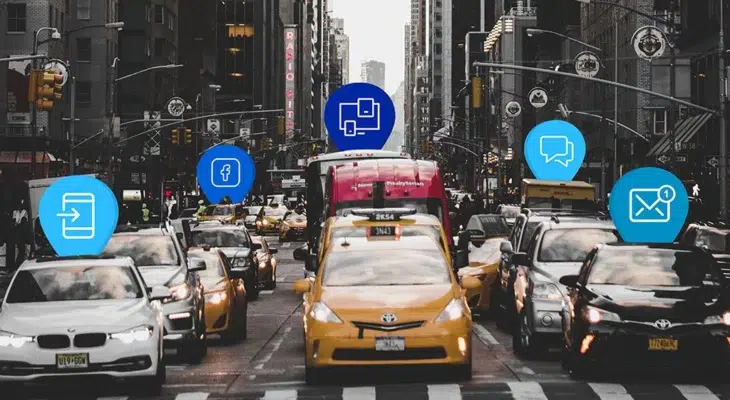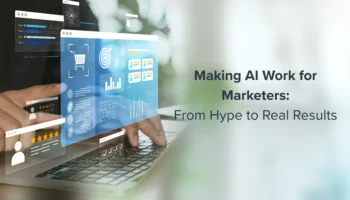The picture above probably incites some familiar emotions. Sitting in traffic would go straight to the top of most people’s list of pet peeves because it’s something we all have to experience at some point, to no fault of our own. Traffic is a system outside of our control that’s preventing us from getting to where we want to be. Sometimes traffic is so bad we can even see our location long before we can actually get to it. Dated marketing technology is much like this. Marketers know where they want to go; they can see the success they should have. They just can’t get there.
Escape the Marketer’s Traffic Jam: The Road From Channel-Centric to Customer-Centric

THE COMMUNICATION PROBLEM WITH DATED TECH
There’s a clear gap today between the kinds of customer experiences marketers aim to create and what they can deliver, and the underlying cause is their inability to use data as intended in marketing execution across channels.
And just like traffic isn’t your fault, neither is this. Channel-focused marketing is executed via point solutions, which, just like legacy platforms, aren’t built with the customer in mind, and typically can’t communicate with other tools in a stack or scale as more data comes in.
Scale and communication between solutions is crucial in the world we live in. As Eric Williamson, VP of Brand and Digital at Acquia, put it at MarTech East: “Don’t pick technology that doesn’t talk to each other,” he said. “Make that a fundamental part of your marketing operations credo. If you can’t share data across the different things that are going to be touching your customer [journey], there’s no way you can provide a personalized experience.”
But with over 7,000 marketing technologies on the market, and over 15 technologies in the average martech stack, how do you get your channels and systems to talk to each other so that you can talk with your customers? The answer: because marketing technologies run on data, you need a shared data language.
GOING CUSTOMER-CENTRIC
It’s now becoming clear that shifting to customer-centric marketing and creating 1:1 personalized experiences requires prioritizing the data that drives it. Past solutions have done a great job at collecting data and managing it, but now it’s time to take it to the next step. Now, instead of working for data, you have to make data work for you — across campaigns and channels. It’s called Data Activation.
In this guide, you’ll learn the drivers behind your data-driven marketing challenges, what exactly is Data Activation, why it’s essential to your marketing success, and how to use Data Activation to deliver game-changing, repeatable growth.


